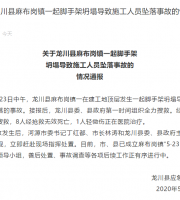Quality control standard: comply with the provisions on allowable deviation of water collection well in code for construction and acceptance of water supply and drainage pipeline engineering (gb50268-2008).
(5) After the masonry of the intake well is completed, the backfilling around the well can be carried out by layered tamping of lime soil or backfilling with lime fly ash gravel waste mixed with cement.
(2) Hang the line according to the position of the well wall, build a layer of the well wall first, and generally the inner opening of the well wall is 68 × 38 diagonal 77.9 cm, 68 × 41 diagonal 79.4, 68 × 41.5 diagonal line 79.7 check the squareness (the size of the water collection well shall not be small during completion acceptance).
Mechanical consumption: mortar mixing 9.6m3/machine shift, transportation of one ton of mortar 4.8m3/machine shift, transportation of 8000 pieces of one ton of red brick / machine shift.
See drainage works for pipe installation and plastering belt.
Pour concrete base plate.
When the concrete base plate reaches a certain strength, lay mortar and build the well chamber.
At the connection pipe interface, the pipe head shall be roughened, the pipe bottom shall be made with twist mortar, and the pipe orifice shall be plastered with tape.
Therefore, after the first masonry and before the construction of the next structural layer, the water inlet well shall be covered with wood to prevent the well from falling into soil or mixture.
(3) For the construction of connecting pipes, the four in one method shall be used to control the quality indexes such as longitudinal slope, straightness, elevation of inner bottom and staggered joint of inner bottom.
3.
The first time is 1.5cm thick, and the second time is 0.5cm thick, with a total thickness of 2cm.
If it is a secondary or tertiary connection, the central line position, elevation and longitudinal slope shall be checked from the buried pipe to avoid reverse slope and bending.
Labor consumption: mortar mixing 3.2m3/man day.
For the first time, the inlet shaft shall be built slightly higher than the stone lime soil structural layer, the second time to the height of the lower layer of asphalt concrete, and the third time to the elevation of the road top surface.
(3) The masonry well wall shall scrape the flat joint at the same time.
(4) During the construction process, the rainwater inlet well is usually built three times.
Allowable deviation items are as follows: allowable deviation (mm) of serial number items inspection frequency inspection method range points 1 well frame is consistent with the well wall ≤ 10 each 1 is measured with a steel ruler 2 well frame is consistent with the surrounding road surface 0 – 101 use a ruler to measure 3 the distance between the rainwater inlet and the roadside line ≤ 201, and use a steel ruler to measure 4 the size in the well + 20 01 measure with steel ruler, the maximum value is 6.
When the brick has covered the branch pipe, the periphery of the pipe orifice shall be plastered with mortar without gap, and the pipe top shall be paved with semicircular brick coupons.
2.2 the rainwater connecting pipe shall be laid straightly and smoothly without staggered mouth, reverse slope and concave pocket.
(4) After the well chamber is laid 20cm above the connecting pipe, the bricklaying shall be suspended, and the well chamber shall be plastered with 1:2 cement mortar in two times.
When digging wells and pits, 30cm allowance shall be reserved on each side, and the design elevation of the bottom plate of the rainwater inlet well shall be controlled.
Except for plastering parts, other parts in the well shall be pointed with cement mortar.
The rainwater branch pipe shall be paved with mortar.
4.
Click the blue words above to pay attention to our construction instructions for rainwater connecting pipe and inlet well 1.
Strictly control the distance between the outer inner wall of the well and the edge stone line, and accurately determine the distance according to the size of the well grate.
2.
During construction, for the road sideline with rainwater inlet well, the theodolite shall be used to determine the outlet sideline, and the rainwater inlet position shall be completely controlled by this baseline.
2.4 common problems and problems encountered in construction (1) prevent the wellhead from being skewed, the included angle between the outer edge line of the inlet shaft and the roadside line, and the rainwater inlet eats the edge stone or is far away from the edge stone.
If the designed rainwater connecting pipe adopts socket pipe, the socket end (big end) of the socket pipe shall be placed in the inlet well.
Construction process flow of rainwater connecting pipe and inlet well trench setting out → grooving → pipe installation → plastering → well chamber concrete mixing → tamping → troweling → curing → masonry → plastering → pointing → grate installation → backfilling.
After plastering, bricks shall be laid to the design height.
Safety measures 1) no one is allowed to sit next to the driver during transportation.
2) When the mixing tank is used, the power circuit and equipment conditions must be checked…
At the same time, when the vehicle passes through the laying position of the connecting pipe during the transportation of materials, the lime soil or the mixture to be paved shall be padded about 50cm above the connecting pipe in advance to prevent the vehicle from crushing the pipe due to the too thin soil covering depth above the connecting pipe.
5.
Qualification certificates and test items to be collected (1) material qualification certificates to be collected: red brick, cement, commercial concrete, pipe and well cover; (2) Retest of single material and various compaction and mix proportion tests: red brick, cement, sand, gravel, concrete ratio (self mixing concrete), mortar ratio; (3) Test: concrete compression and mortar compression.
(2) When constructing the rainwater well, the construction personnel shall face the pipe orifice cut off by the connecting pipe towards the outside of the rainwater well, make the interface with plastering mortar, and expose the complete pipe head no more than 2cm out of the well wall.
During the masonry of edge stones, the masonry shall also be installed according to the measured datum line.
2.3 when the connecting pipe needs to be cut due to its length, it must be cut with a portable toothless saw, and it is not allowed to cut with a pick or axe, so as to ensure that the section at the cut-off point of the cement pipe is neat, and the pipe head in the rainwater inlet well shall be exposed to the inner wall of the well, and the exposed length shall not be greater than 2cm.
During the masonry process, the surveyor shall check the accuracy of the pile position at any time.
Consumption of machinery and labor use type of machinery: one ton turnover, mixing tank and other machines and tools.
Manually build 0.75 water intakes (including pointing and plastering) per man day, and build 500 square wells per man day (including pointing and plastering).
When laying the bottom, check whether the outer edge line of the wellhead is parallel to the reference line and whether it conforms to the distance between the inner edge line of the edge stone.
Main construction methods of rainwater connecting pipe and inlet well 2.1 after the construction of the structural layer for laying rainwater connecting pipe is completed and the elevation of the structural layer can ensure that the soil covering on the top of the rainwater well connecting pipe reaches more than 30cm, the surveyors shall set the edge stone line and calibrate the position of the rainwater well, and manually excavate the rainwater well pit and the foundation ditch of the connecting pipe.
After masonry, the sundries in the well shall be removed, and the well grate base mortar shall be placed on the well.
No matter which method is adopted, the compactness around the well must be guaranteed to prevent the pavement from sinking around the well in the future.
At the same time, in the process of paving the structural layer, special attention shall be paid to protection near the inlet well to prevent the bulldozer or roller from damaging or moving the inlet well.
2.3 masonry of water inlet well: (1) after the well pit is excavated and the plain soil at the bottom of the pit is compacted, 10cm thick gravel is sprinkled.


